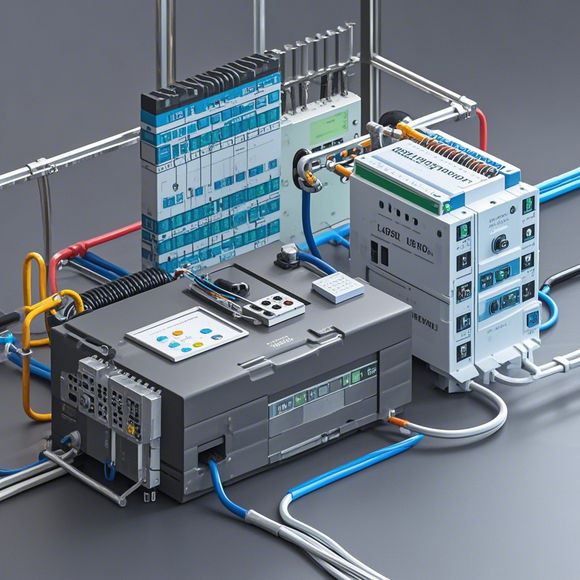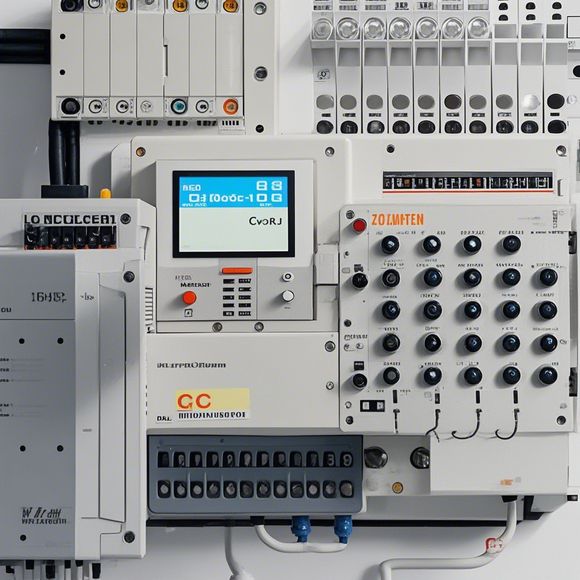PLC Wiring Guide for Beginners
This is a beginner-friendly guide on PLC wiring. It covers essential information for understanding the principles of PLC (Programmable Logic Controllers) wired connections, such as the purpose and structure of each component. The guide also explains how to connect the various components together to form a complete system. Additionally, it provides some tips and tricks for troubleshooting common issues that may arise during the wiring process. By following this guide, you can ensure that your PLC wiring is done correctly, which will help to ensure the safe and reliable operation of the system.
Introduction:
Hello everyone, today I will guide you on how to wire a PLC (Programmable Logic Controller) for your electrical system. As a beginner in the field of automation, understanding how to properly connect and program your PLC is crucial for effective operation. In this tutorial, we'll cover the essential steps involved in wiring an industrial PLC, including selecting the right components, ensuring proper grounding, and troubleshooting common issues that may arise during the process. By the end of this guide, you should have a solid understanding of how to safely and effectively wire your PLC for your specific application. Let's get started!

Step 1: Gather Your Materials
Before you start wiring your PLC, ensure you have all the necessary tools and materials on hand. You'll need an electrician's screwdriver, wire stripper, pliers, wire cutters, crimping tool, terminal block, and wire nuts. Additionally, make sure you have the appropriate lengths of wire needed for your project. If you're not familiar with the various components, consult your PLC documentation or seek assistance from an experienced technician.
Step 2: Choose the Right PLC Model
Determine which PLC model best suits your needs based on your application requirements. Consider factors such as processor speed, memory size, input/output capabilities, and connectivity options. Research online to compare different models and select one that meets your budget, performance, and reliability requirements.
Step 3: Connect the Power Supply
Connect the PLC to your electrical panel by using a power supply that matches the voltage and current rating of your PLC. Ensure that the connection is secure, and any protective devices are in good working order. If necessary, install a surge protector to further safeguard your PLC against power surges.

Step 4: Connect the Power Lines and Ground Wire
Using your wire stripper, carefully strip the wire ends of each power line connected to the PLC. Connect each power line to its corresponding terminal block on the PLC, making sure the connections are firm but not overly tight. Next, connect the ground wire to the same terminal block on the PLC. This ensures that all electronic components on your PLC are securely grounded, reducing the risk of electrocution.
Step 5: Connect Output and Input Connections
Depending on your application, you may need to connect output and input connections to your control panels or other devices. Use your terminal block to connect wires between the PLC and any external devices, ensuring all connections are secure and properly labeled. If connecting to a control panel, follow the manufacturer's instructions to ensure compatibility and optimal performance.
Step 6: Test the PLC for Functionality
Once you've completed the wiring and tested the PLC, it's essential to confirm that it operates correctly. Start by powering on the PLC and checking if any lights or LEDs illuminate indicating that the PLC is powered on. Then, test the outputs and inputs to verify that they are functioning as expected. If any errors or warnings occur during testing, investigate them immediately and resolve any issues before proceeding with further wiring.

Step 7: Troubleshoot Common Issues
In case of any difficulties during the PLC wiring process, it's crucial to know the common issues and how to fix them. Some common issues include loose connections, incorrect wire colors, faulty components, or incorrect settings. To troubleshoot these issues, refer to your PLC manual or contact a professional technician for assistance. Remember, safety is paramount during electrical work, so always follow proper safety protocols.
Conclusion:
By following these step-by-step instructions and troubleshooting tips, you can successfully wire a PLC for your industrial automation system. Remember to stay patient, thorough, and diligent in your work. With practice and experience, you'll become an expert in wiring and programming PLCs, enabling you to handle complex automation tasks with ease and confidence. Happy coding!
Content expansion reading:
Articles related to the knowledge points of this article:
Plumbers Rule! The Role of PLC Controllers in the World of Waterworks
PLC Controllers: A Comprehensive Guide to Understanding Their Prices
Effective Strategies for Handling PLC Control System Faults
PLC Controller Advantages: A Comprehensive Guide for Success in Global Trade
Mastering the Art of PLC Control: Unlocking Industry-Grade Automation Powerhouses